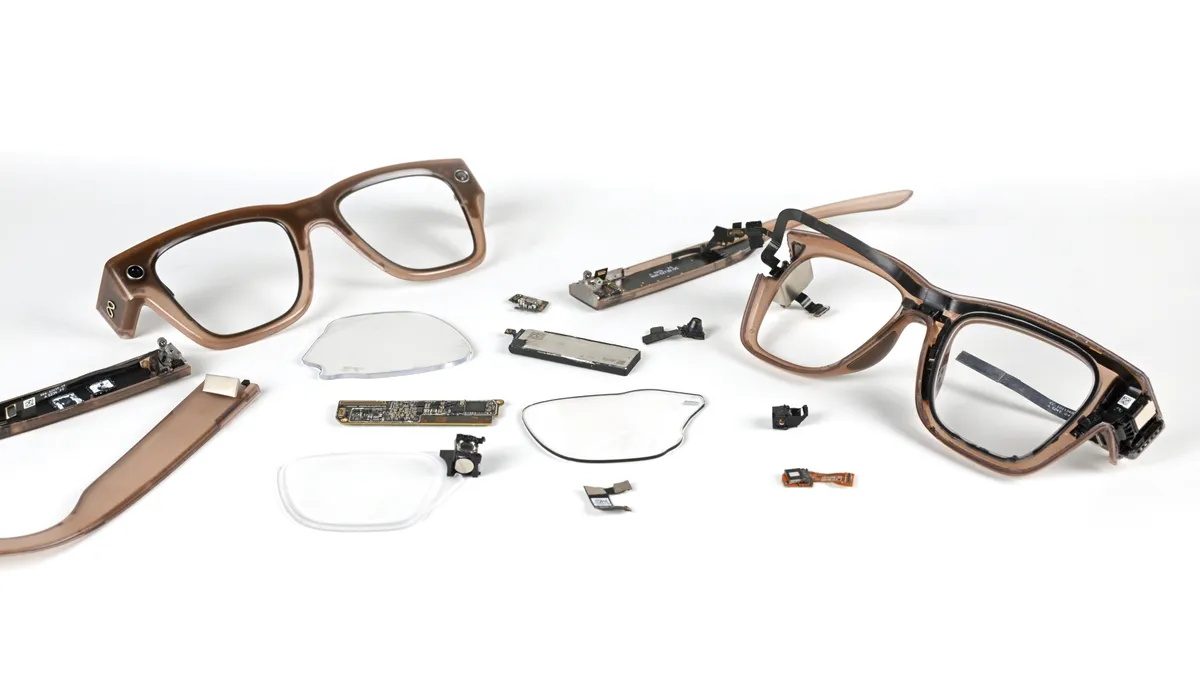
Recently, the dedicated teardown experts at iFixit conducted an extensive examination of Meta’s Ray-Ban Display glasses, providing a literal and insightful look at these innovative smart glasses. Their teardown revealed fascinating details about the advanced geometric waveguide technology that enhances the glasses' floating display feature. For enthusiasts who enjoy the intricacies of device disassembly, iFixit also shared an accompanying video showcasing the entire teardown process, including the dramatic moment when a metal box cutter is used to slice through plastic.
When it comes to repairability, the Ray-Ban Display glasses are rated as somewhat feasible for DIY fixes. With a little heat, users can pry open the arms of the glasses, granting access to internal components. Inside, you’ll discover a 960 mWh battery along with multiple printed circuit boards (PCBs). However, obtaining spare parts for anything beyond the battery may prove to be a significant challenge for those looking to repair their smart glasses.
The front section of the Ray-Ban Display glasses houses essential components, including the antennae and a specialized lens located on the right side. This lens collaborates with a liquid crystal on silicon (LCoS) projector, which effectively reflects images back to the user's eye. Although LCoS technology has been utilized in various applications over the years, including the earlier Google Glass, the real breakthrough in these smart glasses lies in the use of glass.
Unlike conventional diffractive waveguides, the Ray-Ban Display glasses employ a geometric reflective waveguide manufactured by Schott, incorporating technology developed by Lumus specifically for augmented reality (AR) applications. This innovative approach is designed to provide superior optical efficiency, resulting in less light leakage both into and out of the waveguide. Such advancements mark a significant step forward in the realm of smart glasses, enhancing the user experience and visual clarity.
In summary, the teardown of Meta’s Ray-Ban Display glasses by iFixit not only highlights the device's construction and potential for repair but also emphasizes the cutting-edge technology utilized in its display system. With the integration of geometric waveguide technology, these smart glasses represent a notable advancement in the field of augmented reality, paving the way for future innovations in wearable tech.